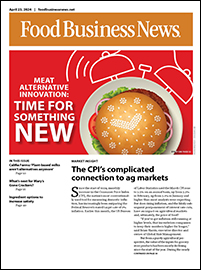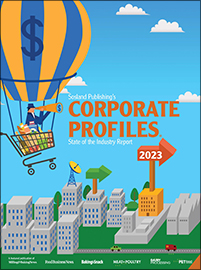ST. LOUIS — A diversified portfolio that ranges from ready-to-eat cereal to egg and potato products and pet food helped lift earnings and sales at Post Holdings in the first quarter of fiscal 2025.
Net income at Post Holdings in the first quarter ended Dec. 31, 2024, totaled $113.3 million, equal to $1.94 per share on the common stock, up 29% from $88.1 million, or $1.46 per share, in the same period a year ago. This year’s results included a $15.4 million gain on swaps, which compared with a $21.1 million expense on swaps a year ago.
Adjusted earnings from continuing operations, meanwhile, totaled $111.9 million, which compared with $113.7 million in the same period a year ago.
Net sales in the quarter increased to $1.974 billion, up 0.4% from $1.965 billion.
The strong first-quarter performance prompted Post to raise its full-year fiscal 2025 adjusted EBITDA to $1.42 billion to $1.46 billion, up from an earlier forecast of $1.41 billion to $1.46 billion.
Segment profit in the Post Consumer Brands business totaled $131 million, down 1.3% from $132.7 million a year ago. Net sales fell 2.5% to $963.9 million from $988.6 million.
Jeff A. Zadoks, executive vice president and chief operating officer, said both pet food and grocery had a strong quarter within the Post Consumer Brands unit.
“For grocery, we benefited from improved utilization due to our plant closure completed last September as well as freight efficiencies,” he said. “For Pet, we benefited from improved cost and plant performance. From a volume standpoint, the cereal category declined 3.2%, slightly more than our planned assumptions.”
Segment profit increased in Post’s Foodservice unit, climbing 14% to $86.1 million from $75.7 million. Net sales also were higher in the segment, rising to $616.6 million from $567.1 million a year ago.
Zadoks said Foodservice results were strong, driven by continued volume growth, ongoing avian influenza pricing from the May 2024 outbreak and improved supply chain performance.
“While restaurant foot traffic remained soft, we saw some year-over-year stabilization,” he said. “Nevertheless, we continue to grow our volumes in both egg and potato products with our higher value-added eggs leading the way at plus 5%. The quarter ended on a challenging note as two of our third-party contracted farms were hit with avian influenza in December. While this did not have a material impact on Q1, when combined with the significant additional avian influenza outbreaks across the industry, our supply imbalance will cause source and cost challenges, especially in our fiscal Q2.”
He said the cost before pricing impact on Post’s fiscal second quarter will be a headwind in the range of $40 million to $50 million when compared with the company’s fiscal first-quarter results.
Segment profit in the Weetabix business was $15.9 million, down 24% from $21 million. Sales also were lower, falling to $127.6 million from $129.1 million.
In the Refrigerated Retail segment, profit fell 32% to $24.2 million from $35.6 million while sales dipped 5.1% to $266.6 million.
Looking ahead, Post said it expects fiscal 2025 capital expenditures to range between $380 million to $420 million, which includes Post Consumer Brands investment in network optimization and pet food safety and capacity, for aggregate expenditures of $90 million to $100 million. The outlook also includes a Foodservice investment of $80 million to $90 million related to the completion of a Norwalk, Iowa, precooked egg facility expansion and continued cage-free egg facility expansion.



